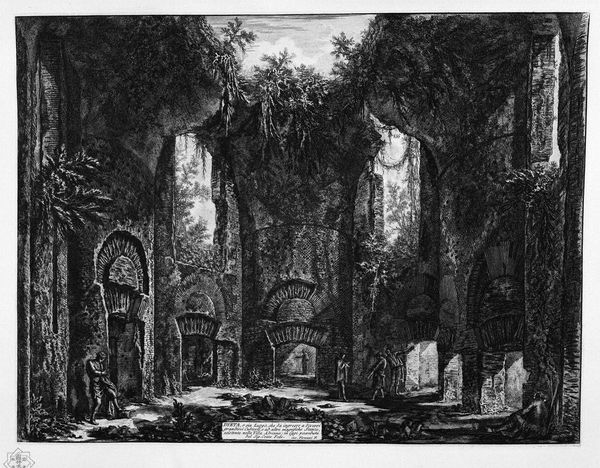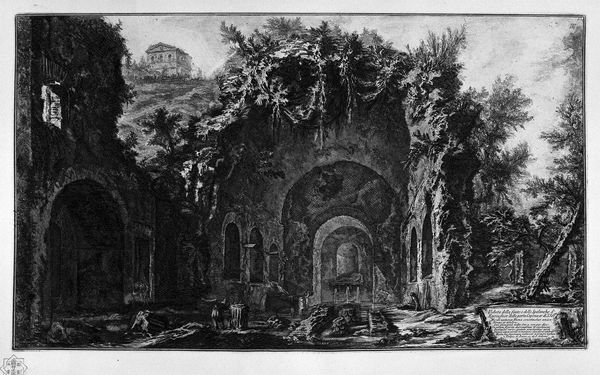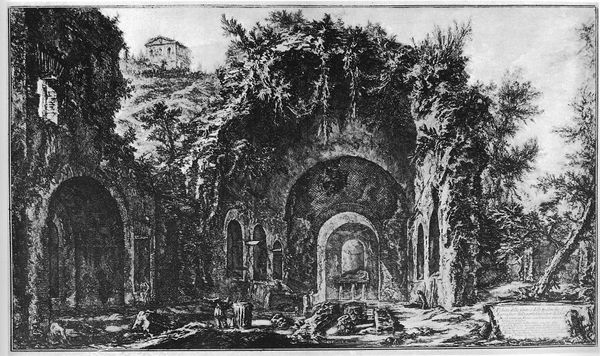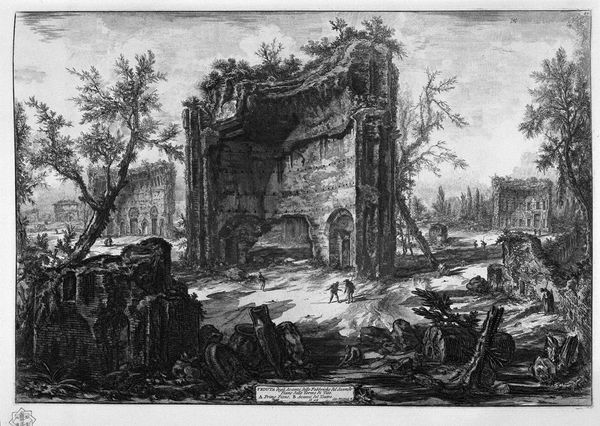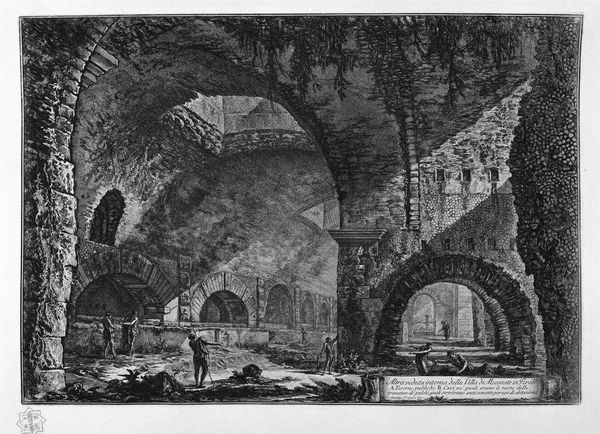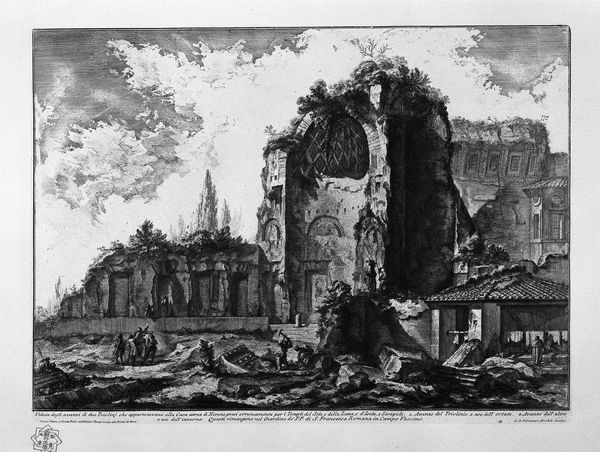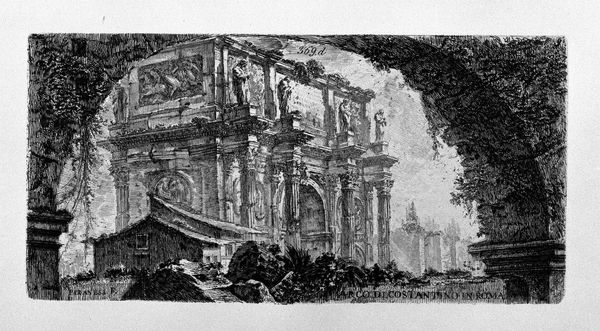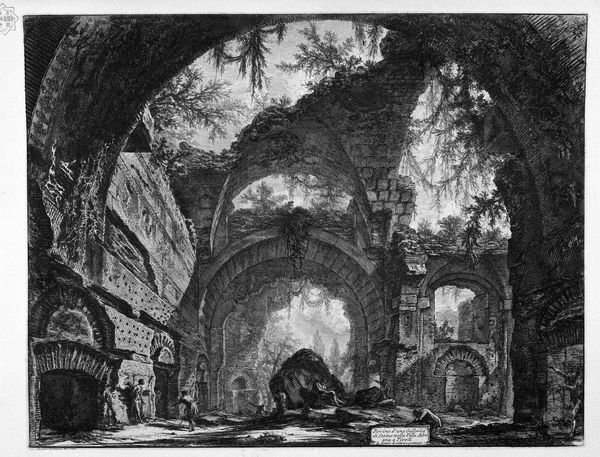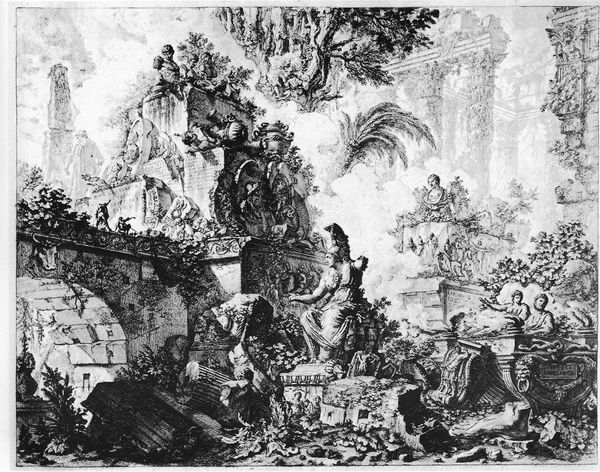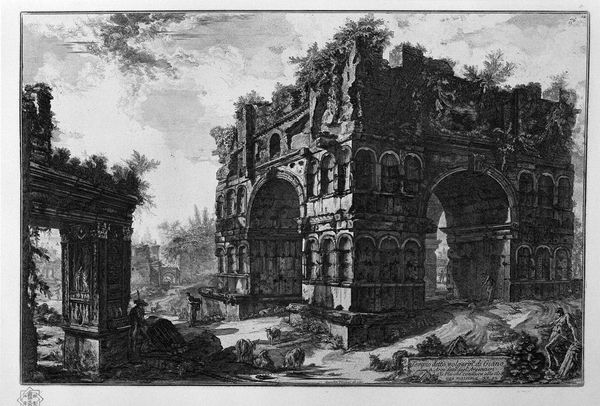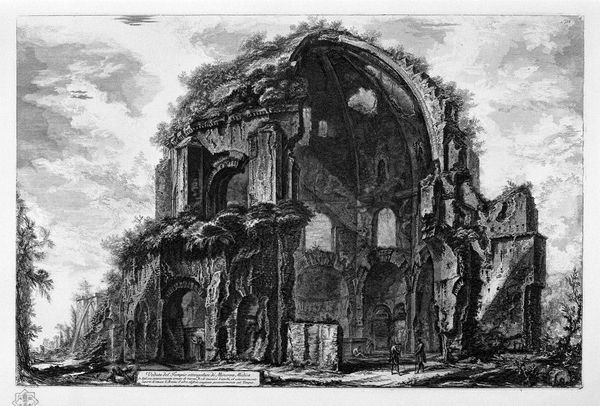
Remains of the Temple of the God Canopus in Hadrian`s Villa at Tivoli
0:00
0:00
drawing, print, photography, engraving, architecture
#
drawing
# print
#
sculpture
#
landscape
#
photography
#
romanesque
#
black and white theme
#
ancient-mediterranean
#
black and white
#
carved
#
surrealism
#
history-painting
#
engraving
#
architecture
Copyright: Public domain
Curator: Here we have "Remains of the Temple of the God Canopus in Hadrian's Villa at Tivoli," by Giovanni Battista Piranesi. It's realized as a print, using engraving to capture the scene. Editor: My immediate reaction is the contrast—this grand architecture reduced to rubble, yet somehow it exudes an undeniable, almost romantic power, especially with that monochrome treatment. Curator: Piranesi was known for his vedute, these detailed views of Rome and its ruins. Here, the crumbling temple is meant to evoke a sense of history, but also, perhaps, of inevitable decay and the transience of human achievement. Look at the meticulous rendering of the stonework—each crack tells a story. Editor: Absolutely, but I also see how the printmaking process itself plays into that message. Engraving, with its careful, almost archaeological precision, mimics the act of uncovering and documenting these layers of history. The labor is intrinsic to our understanding of the image. Curator: I find the juxtaposition of the classical architecture with the encroaching vegetation particularly striking. It speaks to nature's reclamation of human endeavors, a visual metaphor for time’s relentless passage and nature’s endurance beyond human constructs. The figures near the center ground feel dwarfed, symbols of our temporary presence in the face of the colossal past. Editor: Yes, and that points to labor again. These buildings were constructed by people; materials were sourced and transformed, only to be consumed by the elements and time. The image captures a moment in that endless cycle of production and disintegration. The choice of black and white strips the subject back to these processes of destruction, a harsh contrast in comparison to colour depictions. Curator: Perhaps, at a deeper level, it is a commentary on power, legacy, and the fate of empires, mirroring the ruins' symbolic presence within contemporary socio-political thought during that time period. It leaves us pondering how cultural memory gets built from tangible remains. Editor: Right. Piranesi's focus on ruins and materials leads me to question our modern ideas of craftsmanship. How much of our legacy will crumble as visibly and dramatically as this? It really reframes notions about preservation, consumption and long term materiality. Curator: This exploration of symbolic endurance juxtaposed against material transformation has given us fresh perspective on this captivating work. Editor: I'm definitely leaving with a renewed awareness of the artwork's social narrative, interwoven within its very production and degradation.
Comments
No comments
Be the first to comment and join the conversation on the ultimate creative platform.
